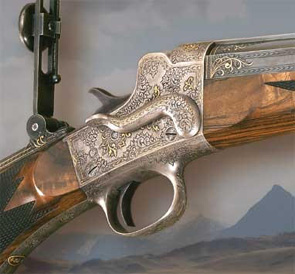One of Us
| Adding to what has been stated already, keeping the parts count low usually also means that the item can be made cheaper without compromising quality, as long as that reduction in parts does not come at the expense of having to use very specialized/expensive manufacturing processes.
I once read an article that claims that Browning had, during one of his legendary tiffs with Winchester, designed a single-shot falling block in .22 Rimfire that had just 4 parts, being the receiver, the breech block, the extractor and a spring. I suspect there must have been a pin for the extractor as well.
The purpose was to force Winchester to pay for a patent that they could not use (due to their market position), but also could not ignore (due to the competition that would result), however I have been unable to find any patent description or drawings.
Apparently, the spring pushed the block forwards and upwards at an angle, and it had the trigger formed as the bottom part of the block, as well as a ledge that hooked under the bottom of the receiver. The firing pin was also formed as a projection on the face of the breech block. Thus, pushing the breech block down with the thumb caused it to hook in the open position, so that a round could be chambered. Pulling the trigger then un-hooked the breech block, whereupon it rose upwards under spring pressure, first containing the cartridge and then striking the rim from the bottom, and setting it off.
Frank de Haas made a big noise about keeping the parts count low, and the De Haas/Miller action had a lot fewer parts than the Ruger, which was at the time the only competition. Of the currently commercially-available actions, the Hagn is probably the leader in this respect, or very nearly so with 35 parts including all springs, pins and screws (very similar to the De Haas in fact). My own action is also very similar, although I have added a few more parts to get additional features such as an adjustable trigger. I suspect the high and low-wall Winchesters must be around the same parts count as well, and the various Martinis (if you include them as falling blocks) must be similar.
Of course, if you delete the "falling block", there are several simpler breech-loaders, notably the Remington rolling block. |


 The Accurate Reloading Forums
The Accurate Reloading Forums  THE ACCURATE RELOADING.COM FORUMS
THE ACCURATE RELOADING.COM FORUMS  Rifles
Rifles  Single Shot Rifles
Single Shot Rifles  Few Parts
Few Parts






 Well thought out comments! Peter,you have provided an enjoyable verbal picture of the simple Browning design for all of us.
Well thought out comments! Peter,you have provided an enjoyable verbal picture of the simple Browning design for all of us.

